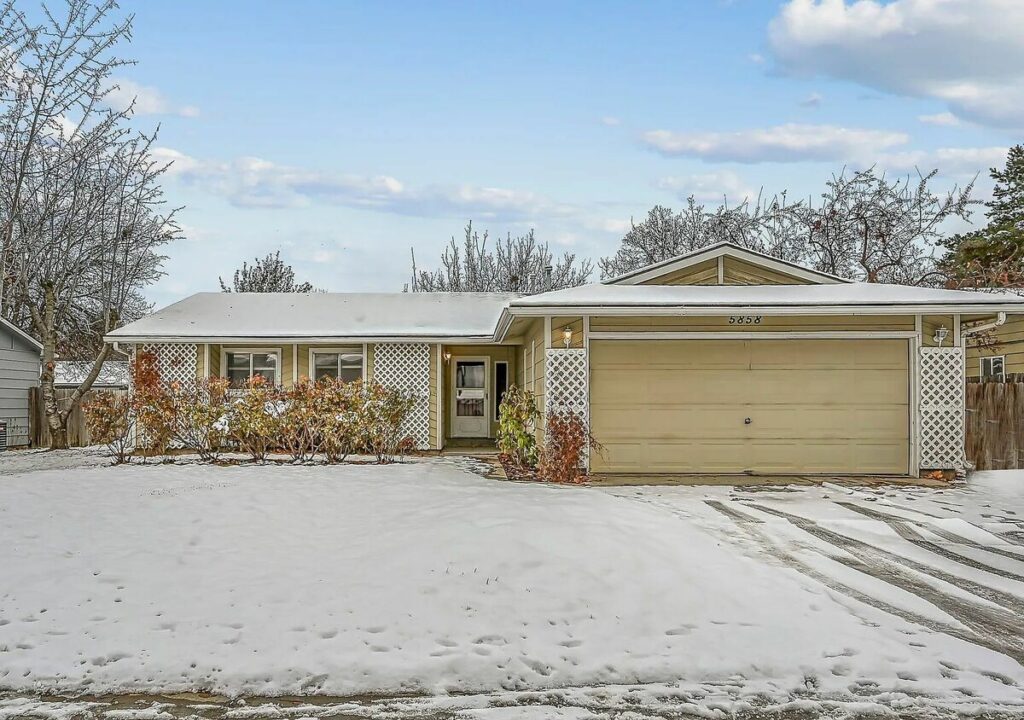upto $3,000,000
Loan Type Construction Loan, DSCR Loan, Rehab Loan
Property Type 2-4 Units, SFR

Idaho’s real estate market has been experiencing significant growth and attracting attention from investors seeking long-term rental opportunities. With its stunning natural landscapes, strong job market, and growing population, Idaho offers a compelling environment for real estate investments. One crucial aspect to consider when evaluating these opportunities is the Debt Service Coverage Ratio (DSCR), a financial metric that helps assess the financial health and income potential of investment properties. In this article, we will explore Idaho’s long-term rental real estate market and delve into the significance of the DSCR in making informed investment decisions.
Idaho’s real estate market has been thriving in recent years, driven by factors such as population growth, job opportunities, and an overall high quality of life. Cities like Boise, Coeur d’Alene, and Idaho Falls have witnessed increased demand for long-term rental properties due to a combination of affordability, scenic beauty, and a strong sense of community. Analyzing the rental market trends, vacancy rates, and local economic factors can provide valuable insights into the potential of Idaho’s long-term rental market.
The Debt Service Coverage Ratio (DSCR) is a key financial metric used by lenders and investors to assess the income-generating capacity of an investment property. It measures the property’s ability to generate sufficient income to cover its debt obligations, including loan payments and associated costs. Calculating the DSCR involves dividing the property’s net operating income (NOI) by its annual debt service.
A DSCR ratio of 1 or higher indicates that the property generates enough income to cover its debt obligations. Lenders typically prefer a higher DSCR ratio, such as 1.25 or above, as it offers greater assurance of the property’s ability to generate consistent cash flow and meet its financial commitments. Investors often use the DSCR as a tool to evaluate the risk associated with a potential investment and assess the property’s income potential.
When exploring Idaho’s long-term rental market and considering DSCR, several factors should be taken into account:
Idaho’s long-term rental real estate market offers enticing opportunities for investors seeking stable income and long-term growth. Understanding the significance of the Debt Service Coverage Ratio (DSCR) and considering factors such as location, rental demand, cash flow projections, market research, and financing options can help investors make informed decisions. By thoroughly assessing the DSCR and market conditions, investors can position themselves for success in Idaho’s dynamic real estate market.
When it comes to real estate ventures or business expansions in the Gem State, securing financing is often a crucial step. Debt Service Coverage Ratio (DSCR) loans provide a reliable avenue for many investors and entrepreneurs. If you’re considering such a loan in Idaho, you might be wondering where the most promising opportunities lie. Here’s a guide to the top 10 cities in Idaho where DSCR loans can be particularly advantageous:
As Idaho’s capital and largest city, Boise offers diverse opportunities for real estate investment and business development. DSCR loans in Boise often support projects in sectors such as technology, healthcare, and manufacturing, leveraging the city’s strong job market and vibrant downtown area.
Located just west of Boise, Meridian is one of Idaho’s fastest-growing cities with a booming economy. DSCR loans in Meridian can fuel projects that contribute to the city’s growth and development, such as residential communities, commercial developments, and public infrastructure improvements, capitalizing on the city’s strategic location and strong market fundamentals.
As one of Idaho’s largest cities, Nampa offers a mix of residential and commercial opportunities for real estate investment. DSCR loans in Nampa can support projects that enhance the city’s quality of life, such as mixed-use developments, parks and recreation facilities, and public infrastructure improvements, leveraging the city’s strong market fundamentals and desirable amenities.
Located in southeastern Idaho, Idaho Falls is a vibrant city with a diverse economy and a strong sense of community. DSCR loans in Idaho Falls can support projects that contribute to the city’s growth and development, such as technology innovation centers, healthcare facilities, and small business initiatives, leveraging the city’s skilled workforce and strategic location.
Situated in southeastern Idaho, Pocatello is a thriving city with a rich history and strong cultural heritage. DSCR loans in Pocatello can support projects that enhance the city’s quality of life, such as downtown revitalization efforts, arts and cultural institutions, and public infrastructure improvements, leveraging the city’s natural beauty and strong sense of community.
Located just west of Nampa, Caldwell is a growing city with a diverse economy and a strong agricultural heritage. DSCR loans in Caldwell can support projects that contribute to the city’s growth and development, such as mixed-use developments, food processing facilities, and small business initiatives, capitalizing on the city’s strategic location and strong market fundamentals.
Located in south-central Idaho, Twin Falls is a dynamic city with a thriving economy and a strong entrepreneurial spirit. DSCR loans in Twin Falls can support projects that contribute to the city’s growth and development, such as agricultural innovation centers, healthcare facilities, and tourism developments, leveraging the city’s natural resources and strategic location.
Situated in northern Idaho, Coeur d’Alene is known for its stunning lakefront setting and outdoor recreational opportunities. DSCR loans in Coeur d’Alene can support projects that enhance the city’s quality of life, such as waterfront developments, hospitality facilities, and public infrastructure improvements, capitalizing on the city’s natural beauty and strong demand for real estate.
Located just east of Coeur d’Alene, Post Falls is a growing city with a diverse economy and a strong sense of community. DSCR loans in Post Falls can support projects that contribute to the city’s growth and development, such as industrial parks, retail centers, and public infrastructure improvements, leveraging the city’s strategic location and strong market fundamentals.
Situated just north of Boise, Eagle is a thriving city with a high quality of life and a strong sense of community. DSCR loans in Eagle can support projects that enhance the city’s quality of life, such as residential communities, parks and recreation facilities, and small business initiatives, capitalizing on the city’s desirable amenities and strong market fundamentals.
In conclusion, Idaho presents a wealth of opportunities for obtaining DSCR loans, with each city offering its own unique advantages. Whether you’re drawn to the vibrant energy of Boise or the outdoor paradise of Coeur d’Alene, there’s no shortage of potential for investment and growth in the Gem State. With the right financing in place, the possibilities are endless.
Are you a lender who wants a free or premium listing on LendDing? Get started today!
Or Contact Us if you have a loan inquiry or question.
Idaho has specific usury laws that cap interest rates for certain types of loans. For example, personal loans have a maximum interest rate of 12% unless otherwise agreed upon in writing. Understanding these limits can help you avoid excessively high-interest rates.
Ensure that the lender is licensed to operate in Idaho. The Idaho Department of Finance oversees lending practices in the state. Dealing with licensed lenders protects you from predatory practices and ensures the legitimacy of the transaction.
Compare the interest rates and additional fees associated with loans. Even within the legal limits, rates can vary widely among lenders. Be mindful of origination fees, late fees, and prepayment penalties that can increase the total cost of the loan.
Consider the type of loan that best suits your needs. Idaho offers various loan types, including personal loans, payday loans, title loans, and installment loans. Each type has unique terms, conditions, and risks.
Understand how the loan will impact your credit score. Some loans may help build your credit if managed properly, while others, particularly high-interest short-term loans, can negatively affect your credit if not repaid on time.
Idaho provides consumer protection resources and financial assistance programs. The state offers counseling services and legal assistance for those struggling with debt. Utilize these resources to make informed decisions and avoid financial pitfalls.
Evaluate the loan term and repayment plan. Longer terms usually mean lower monthly payments but higher overall costs due to interest. Ensure the repayment schedule fits your financial situation to avoid defaulting.
Idaho’s economy can influence loan terms and availability. The state’s economy is diverse, with significant contributions from agriculture, technology, and manufacturing. Economic conditions can affect employment rates and personal income, impacting your ability to repay the loan.
Research the reputation of potential lenders. Look for customer reviews, Better Business Bureau ratings, and any complaints filed with the Idaho Department of Finance. A reputable lender is more likely to offer fair terms and reliable service.
Understand the legal recourse available in Idaho if disputes arise. Some lenders may include arbitration clauses in their contracts, limiting your ability to sue. Knowing your rights and the legal procedures can help you navigate any issues that may occur during the loan term.
Funding a loan in Idaho requires careful consideration of various factors, from understanding state-specific regulations to evaluating economic conditions and lender reputations. By thoroughly researching and comparing your options, you can make informed decisions that align with your financial goals and ensure a positive borrowing experience.
AL | AK | AZ | AR| CA | CO | CT | DE| FL | GA | HI | ID | IL | IN | IA | KS| KY | LA | ME | MD | MA | MI| MN| MS | MO | MT | NE | NV | NH | NJ | NM | NY | NC | ND | OH | OK | OR | PA | RI | SC | SD | TN | TX | UT | VT | VA | WA | WV | WI | WY




When applying for an investment property loan in Idaho, the Debt Service Coverage Ratio (DSCR) plays a crucial role in determining whether you qualify for financing. Lenders use DSCR to assess the property’s cash flow relative to its debt obligations. In this guide, we’ll break down what DSCR is, how to calculate it, and why it’s particularly important for real estate investments in Idaho.
The Debt Service Coverage Ratio (DSCR) is a financial measure that compares a property’s net operating income (NOI) to its total debt service (annual loan payments). A higher DSCR indicates that the property generates more income than is needed to cover its debt obligations, making it a less risky investment for lenders.
Lenders typically look for a DSCR of 1.25 or higher, meaning the property produces 25% more income than what is required to meet its debt payments. If your DSCR falls below this benchmark, you may face difficulties securing a loan or may receive less favorable terms, such as a higher interest rate.
Idaho’s real estate market has been booming, with growing investment opportunities in cities like Boise, Coeur d’Alene, and Twin Falls. Whether you’re investing in residential rental properties, vacation homes near the state’s natural landmarks, or commercial properties, lenders will rely on your DSCR to gauge whether the property can generate enough cash flow to support the loan.
In regions where seasonal income fluctuations occur, such as in ski resort towns or agricultural areas, having a strong DSCR is especially critical. Lenders may require a higher DSCR to account for income variability throughout the year.
To calculate DSCR, you need two primary figures:
Net Operating Income (NOI): This is the income generated by the property after operating expenses (like property taxes, management fees, insurance, and maintenance) have been deducted, but before debt service.
Debt Service: This is the total annual loan payments, including both the principal and interest.
The formula to calculate DSCR is:
DSCR=Total Debt Service (Annual Loan Payments)Net Operating Income (NOI)
Let’s say you’re purchasing a rental property in Boise, Idaho. You want to calculate your DSCR to determine your eligibility for a loan:
Using the DSCR formula:
In this scenario, your DSCR is 1.29, meaning your property generates 29% more income than necessary to cover its debt obligations. This is typically considered a healthy DSCR, making you a favorable candidate for an investment loan.
DSCR > 1.25: A DSCR greater than 1.25 is generally considered strong. It indicates that your property generates more income than needed to comfortably cover debt payments, increasing your chances of securing favorable loan terms.
DSCR between 1.0 and 1.25: This range suggests that the property’s income is just enough to cover its debt service. While some lenders may approve a loan with these figures, the terms may be less favorable due to the increased risk.
DSCR < 1.0: A DSCR below 1.0 indicates that the property does not generate enough income to cover its debt obligations, making it difficult to secure financing without additional support, such as a higher down payment or a co-borrower.
If your DSCR is lower than the required threshold, you can take the following steps to improve it:
Increase Net Operating Income (NOI): Boost your NOI by raising rental rates, reducing operating expenses, or adding additional revenue streams, such as short-term vacation rentals.
Reduce Debt Service: You can lower your debt service by negotiating a lower interest rate, extending the loan term, or increasing your down payment to reduce the loan amount.
Consider Smaller Loans: If possible, reduce the loan amount to lower your debt service and improve your DSCR.
Different types of properties and loans will have varying DSCR requirements in Idaho:
Residential Rental Loans: Lenders may require a DSCR of at least 1.25 for long-term residential rental properties, especially in areas like Boise, where the rental market is strong. Maintaining a DSCR above this level will help secure better loan terms.
Vacation Rental Loans: If you’re purchasing a vacation home in areas like Sun Valley or Coeur d’Alene, lenders might require a higher DSCR, such as 1.3 or above. Vacation rentals can be subject to seasonal fluctuations, so a strong DSCR helps reassure lenders that the property can meet its debt obligations even during off-peak seasons.
Commercial Property Loans: Commercial properties in Idaho’s growing cities, like Meridian or Nampa, may require a DSCR of 1.3 or higher. Commercial tenants often have longer leases, but lenders will still want a robust DSCR to mitigate risk.
Understanding and optimizing your DSCR is an essential step in securing an investment property loan in Idaho. Whether you’re investing in urban rentals, rural properties, or commercial real estate, a strong DSCR will make you a more attractive borrower and improve your chances of securing better loan terms.
Before applying for a loan, work with your lender to understand their specific DSCR requirements. By ensuring that your property’s income comfortably exceeds its debt service, you’ll increase your chances of success in Idaho’s diverse and dynamic real estate market. With a strong DSCR, you’ll be well-positioned to capitalize on the numerous investment opportunities Idaho has to offer.